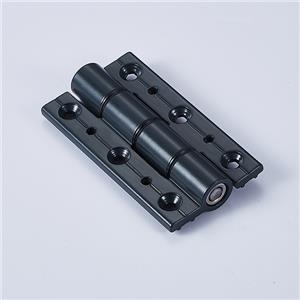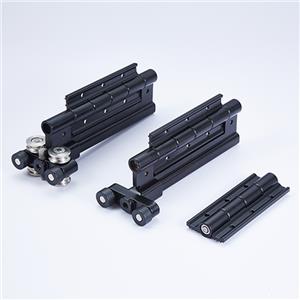Surface treatment of aluminium alloy handles
Surface treatment of aluminium alloy handles is essential for enhancing their appearance, corrosion resistance, and wear resistance. Various methods can be employed depending on the desired outcome. Here are some common surface treatment techniques for aluminium alloy handles:
1. Anodizing
· Process: Electrochemical process that forms a protective oxide layer on the aluminium surface.
· Benefits: Enhances corrosion resistance, allows for dyeing to achieve different colors, and improves surface hardness.
· Applications: Widely used in consumer electronics, automotive parts, and architectural components.
2. Powder Coating
· Process: Application of a dry powder, which is then cured under heat to form a hard, protective finish.
· Benefits: Provides a thick, durable, and uniform coating that is resistant to chipping, scratching, and fading.
· Applications: Common in outdoor furniture, automotive parts, and appliances.
3. Electroplating
· Process: Deposition of a metal layer (e.g., nickel, chrome) onto the aluminium surface through an electrochemical process.
· Benefits: Enhances corrosion resistance, improves electrical conductivity, and provides a decorative finish.
· Applications: Used in decorative items, automotive trim, and electronic components.
4. Passivation
· Process: Chemical treatment that enhances the natural oxide layer on aluminium.
· Benefits: Increases corrosion resistance without significantly altering the appearance or dimensions of the handle.
· Applications: Common in aerospace, marine, and food processing industries.
5. Painting
· Process: Application of liquid paint, followed by drying or curing.
· Benefits: Offers aesthetic flexibility with a variety of colors and finishes, provides additional protection against corrosion.
· Applications: Used in consumer goods, automotive parts, and construction.
6. Brushing
· Process: Mechanical process that involves brushing the aluminium surface to create a uniform texture.
· Benefits: Creates a matte finish, enhances aesthetic appeal, and can help hide minor surface imperfections.
· Applications: Common in consumer electronics, kitchenware, and architectural components.
7. Polishing
· Process: Mechanical process involving abrasive materials to smooth and shine the aluminium surface.
· Benefits: Produces a mirror-like finish, enhances aesthetic appeal.
· Applications: Used in decorative items, automotive parts, and high-end consumer products.
8. Sandblasting
· Process: Propelling abrasive material against the aluminium surface to create a rough texture.
· Benefits: Improves paint adhesion, provides a uniform matte finish.
· Applications: Common in preparing surfaces for subsequent coatings and in industrial components.
These treatments can be combined to achieve specific properties and finishes for aluminium alloy handles, depending on the requirements of the application.
WSMT supply premium quality aluminium accessories for windows and doors.
Welcome to contact us: whatsapp/Wechat/Zalo+86 150 156 88141
Email:catherine@weisidunwj.com




